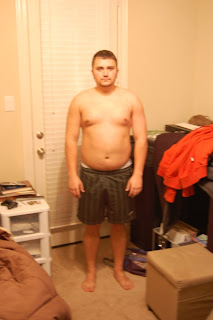More on crossfit scaling
I've previously shared some thoughts on crossfit scaling, and I want to revisit that a little bit because I missed something key about scaling that hit home this week.
It's not only important to scale the weights so that you're finishing the workout in the correct time domain (i.e. if Fran is taking everyone else 5 minutes, and you 20...you're doing it wrong), it's important to scale the movements properly as well. All of the "hard" movements in crossfit (handstand pushups, pullups, muscleups, toes to bar, snatch) have several different ways to scale. Some of these ways are a progression towards the movement that allows you to build the required strength of that movement, and some just attempt to turn that slot in the workout into another little cardio burnout. A workout I did this week highlighted the need to actually pay attention to which scale you choose for a movement depending on the selected time domain of the workout. I'll explain
If you're doing fran (thrusters and pullups), which is supposed to be a fire breathing blast of only a few minutes, scaling the pullups for someone that can't do them to jumping pullups might be a good choice to keep the firey blast element of the workout up, and that heart-rate pegged. But it's worth noting that if someone is struggling with the strength to do pullups, jumping at the bar over and over is never...ever...going to help them build the strength to get pullups. Ever. So if we change the time domain to, say, an 18 minute AMRAP involving pullups where keeping the heart and lungs pumping as hard as they possibly can isn't the goal, scaling to jumping pullups doesn't make any sense. Instead the scale should be ring rows to allow that athlete to build the strength that will allow him to progress towards actual pullups.
It turns out that this coaching thing is actually hard. The "program for the best, scale for the rest" concept requires quite a bit of thought about what your intent is for the workout so that you can effectively scale for the rest. There is no one-size-fits-all scale. You really have to pay attention to athletes to help them individually. And with what they're paying for your services, you owe them that.
It's not only important to scale the weights so that you're finishing the workout in the correct time domain (i.e. if Fran is taking everyone else 5 minutes, and you 20...you're doing it wrong), it's important to scale the movements properly as well. All of the "hard" movements in crossfit (handstand pushups, pullups, muscleups, toes to bar, snatch) have several different ways to scale. Some of these ways are a progression towards the movement that allows you to build the required strength of that movement, and some just attempt to turn that slot in the workout into another little cardio burnout. A workout I did this week highlighted the need to actually pay attention to which scale you choose for a movement depending on the selected time domain of the workout. I'll explain
If you're doing fran (thrusters and pullups), which is supposed to be a fire breathing blast of only a few minutes, scaling the pullups for someone that can't do them to jumping pullups might be a good choice to keep the firey blast element of the workout up, and that heart-rate pegged. But it's worth noting that if someone is struggling with the strength to do pullups, jumping at the bar over and over is never...ever...going to help them build the strength to get pullups. Ever. So if we change the time domain to, say, an 18 minute AMRAP involving pullups where keeping the heart and lungs pumping as hard as they possibly can isn't the goal, scaling to jumping pullups doesn't make any sense. Instead the scale should be ring rows to allow that athlete to build the strength that will allow him to progress towards actual pullups.
It turns out that this coaching thing is actually hard. The "program for the best, scale for the rest" concept requires quite a bit of thought about what your intent is for the workout so that you can effectively scale for the rest. There is no one-size-fits-all scale. You really have to pay attention to athletes to help them individually. And with what they're paying for your services, you owe them that.

Comments
Post a Comment